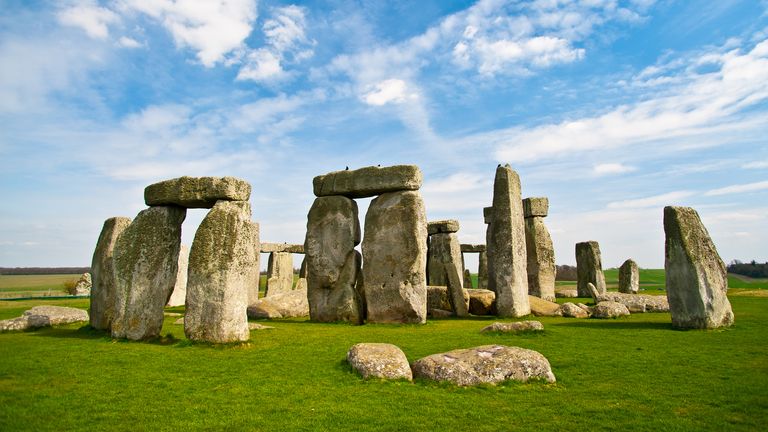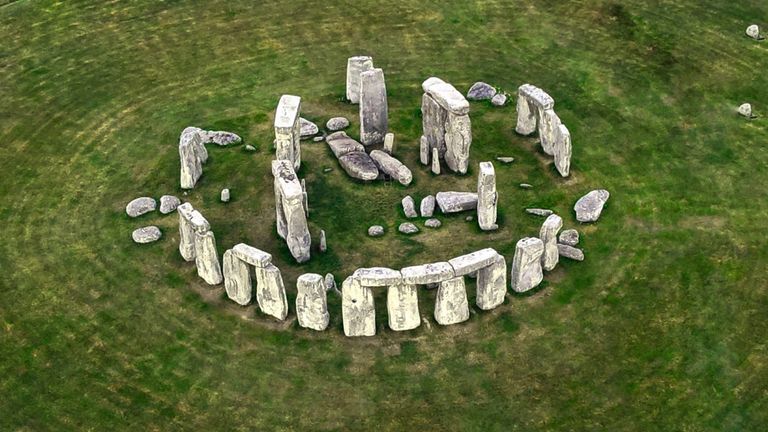
Researchers propose that Stonehenge functions as a colossal solar calendar, bridging the UK to ancient Egypt, according to Professor Timothy Darvill from Bournemouth University. He suggests that the site, crafted around a solar year of 365.25 days, served as a tool for tracking time, with weeks comprising ten days and a different monthly structure than today’s.
This solar calendar, developed in the eastern Mediterranean after 3000 BC and later adopted by Egypt around 2700 BC, possibly influenced Stonehenge’s design. Aligned with the summer and winter solstices, the site’s layout suggests its calendrical purpose.

Darvill’s analysis reveals a straightforward calendar system. The outer ring of 30 sarsen stones, erected around 2500 BC, represents the days of the month, divided into three weeks of ten days each. Each week starts at a marked stone, with leap days accounted for by four station stones outside the circle.
To synchronize with the solar year, a five-day month was added, symbolized by the five trilithons at the center. These trilithons, consisting of two vertical stones supporting a horizontal one, serve as markers for the additional month.
Stonehenge’s alignment with the sun enables easy detection of any discrepancies in day counting during solstices, reinforcing its role as a functional calendar.
News
WNBA Fans Buzz Over “Anne Splashaway” Nickname for Caitlin Clark
Upon witnessing Caitlin Clark’s three-point prowess during the Indiana Fever’s training camp, a WNBA fan took to social media to coin a creative nickname for the 2024 WNBA Draft’s top pick. Inspired by Clark’s sharpshooting skills, the fan cleverly dubbed…
“It wasn’t like this”: Angel Reese notes Clear Distinction in quality between NCAA and WNBA
Angel Reese, a standout college star and 2023 NCAA champion, made waves in the 2024 WNBA draft when she was selected by the Chicago Sky as the seventh overall pick. Since joining the team, Reese has been fully committed to…
“No deposit, no return mindset”: Indiana Fever Coach Establishes Standards for Caitlin Clark, Aliyah Boston, and Co Prior to Season Opener
All eyes are fixed on the Indiana Fever ahead of the 2024 WNBA season, following their acquisition of the highly coveted consensus number one overall pick, Caitlin Clark, in the 2024 WNBA draft. Amidst heightened expectations, head coach Christie Sides…
Dentist Finds What May Be A Prehistoric Human Jawbone Embedded In His Parents’ New Floor
The discovery of a human mandible embedded in travertine flooring during a home renovation in Europe has sparked curiosity and raised questions about its origins. The mandible was noticed by the homeowner’s son, a dentist, who recognized its unmistakable shape….
Researchers Have Successfully Created Artificial Cells That Act Just Like Human Cells
The University of North Carolina at Chapel Hill researchers have achieved a significant breakthrough in biotechnology by engineering artificial cells with life-like behavior using DNA-peptide technology. In their experiment, the team manipulated peptides and genetic material to create cell cytoskeletons,…
LA Sparks 1st Rounder Cameron Brink and Mother Groove to GloRilla’s Beats in Latest TikTok, Sporting $8,600 Hermes Bag
Cameron Brink shares a close bond with her mother, Michelle, often showcased on social media. Recently, they posted a TikTok video dancing to the rhythm of rapper GloRilla’s “Yeah Glo!” In the clip, the former Stanford standout was spotted accessorizing…
End of content
No more pages to load











